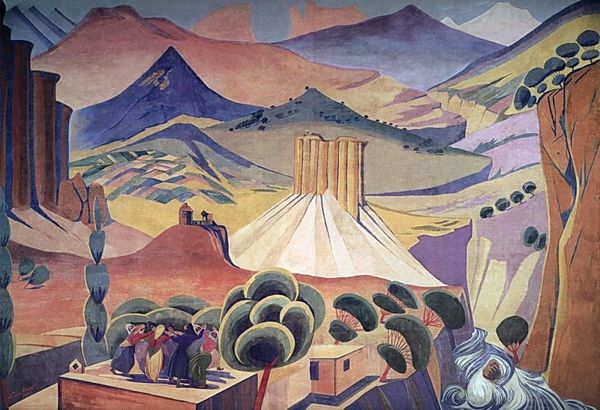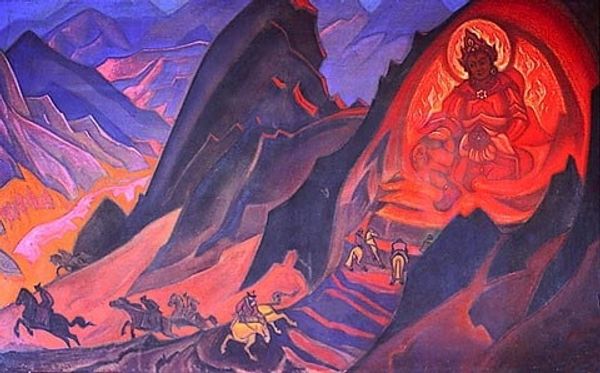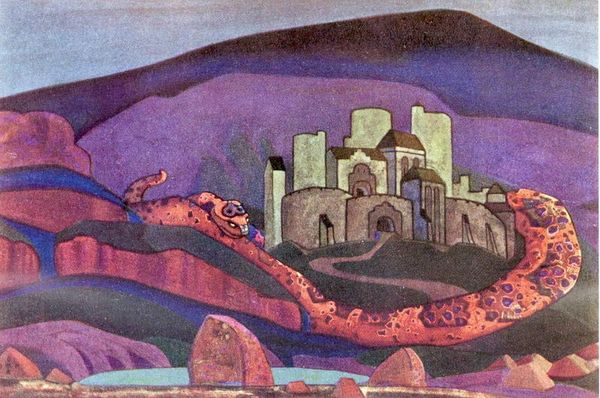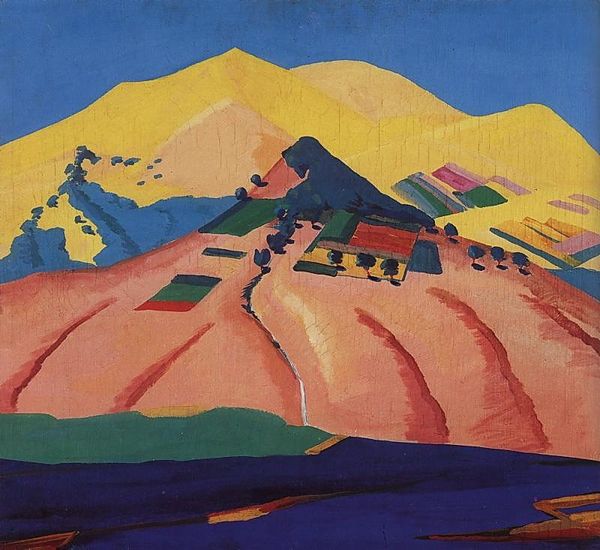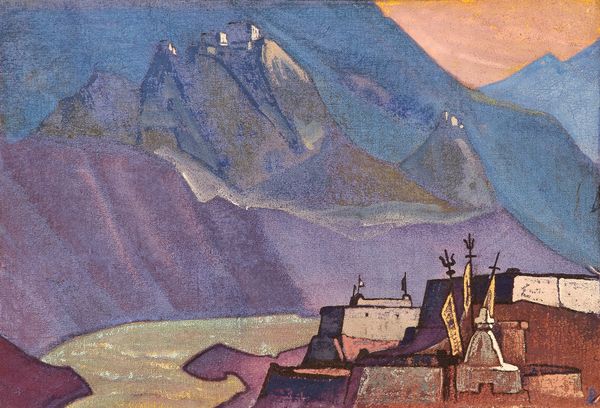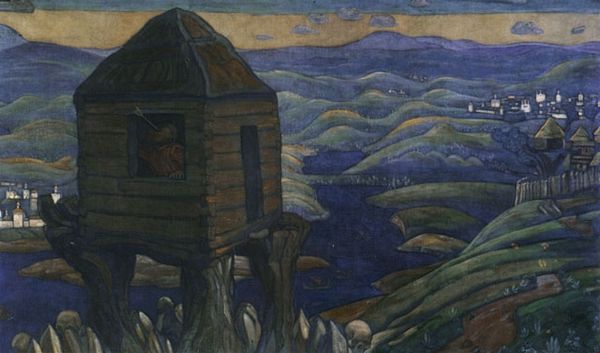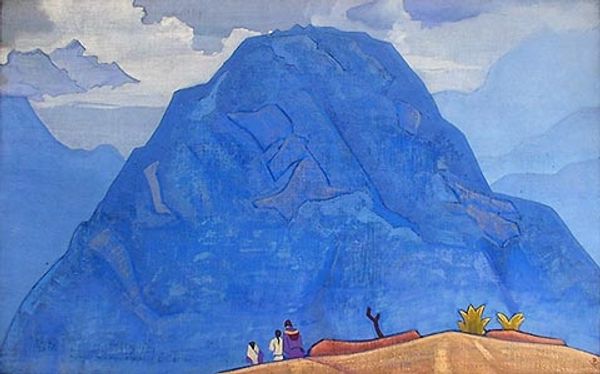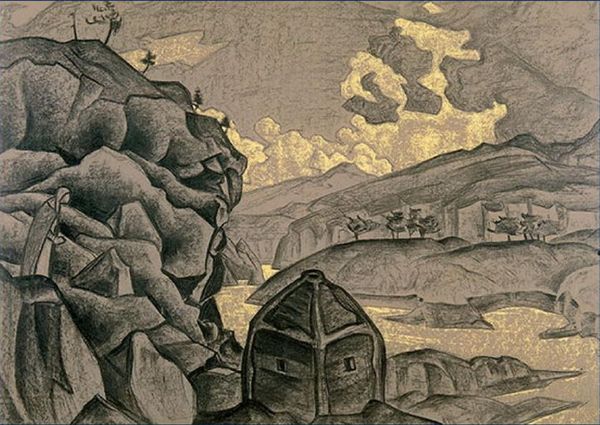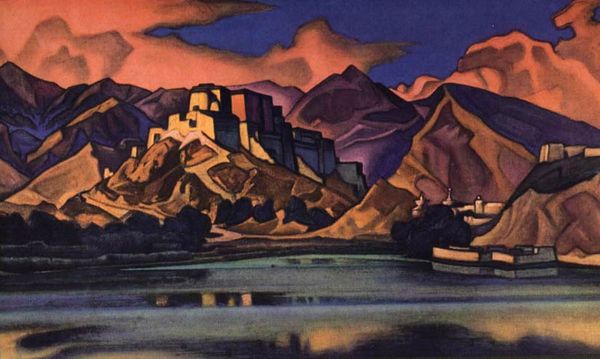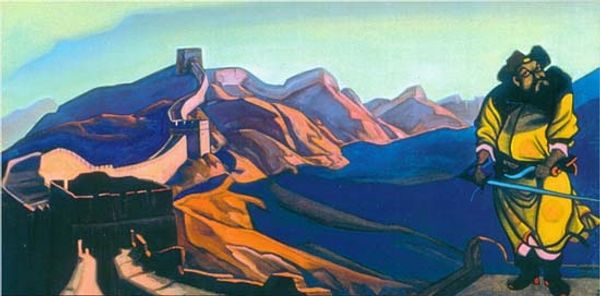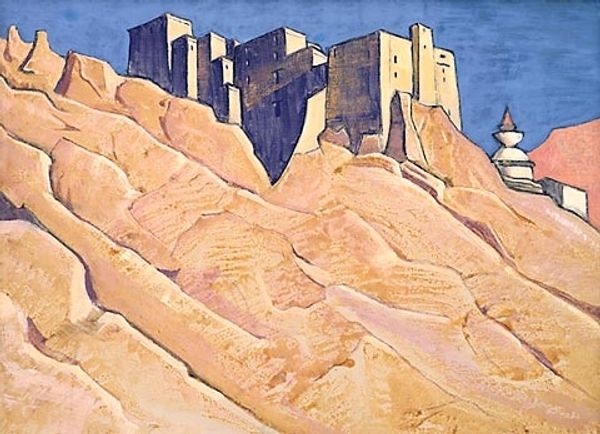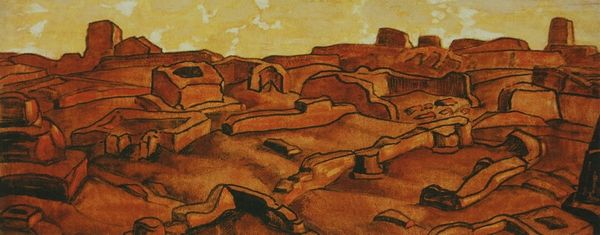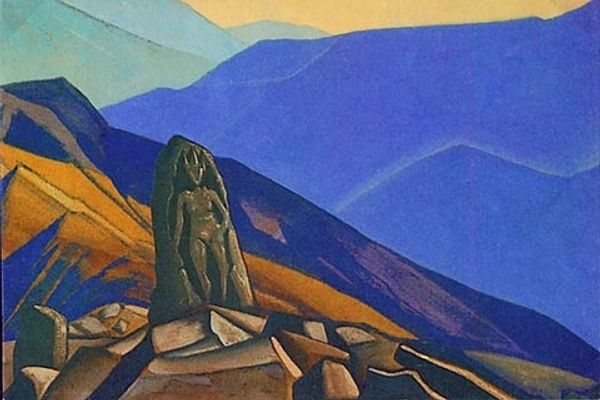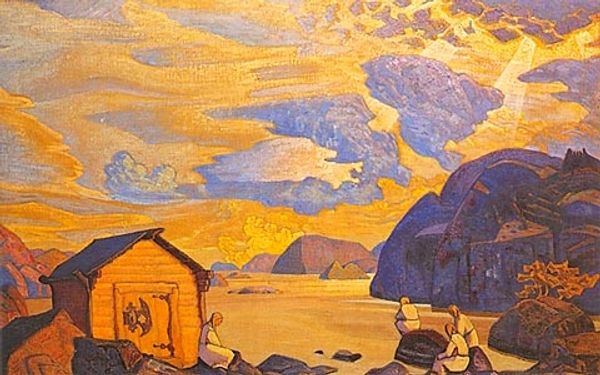
Copyright: Public domain
Curator: Nicholas Roerich’s "Saint Guests," painted in 1923, offers us a mystical glimpse into a spiritual landscape, wouldn't you agree? Editor: It does, though my immediate thought is less about the spiritual and more about the materiality – the bold, almost raw application of oil paint that shapes the land and sky. The tangible craft feels incredibly present. Curator: That rawness certainly contributes to the symbolic weight. Roerich, deeply invested in the spiritual and cultural heritage of Russia and Asia, often used landscape to convey inner journeys. Note how the stylized figures, the "Saint Guests," are dwarfed by the architecture and nature, suggesting a dialogue between humanity and a higher power. It pulls in Russian Symbolism from the turn of the century and also some key tenets of the more contemporary Russian Avant Garde. Editor: Precisely, and that interaction is built right into the oil paint. Look at how Roerich’s brushwork mimics the texture of the earth, binding figures, buildings, land, water and sky in layers of shared medium. This makes the material conditions of labor– his actual time standing at the canvas, layering the oil paints– visible and inseparable from its meaning. It underscores the human hand present, and the physical act of devotion to nature, regardless of who or what the figures are. Curator: Roerich's work often functioned as a form of cultural and political commentary. During the early 20th century, amid immense social upheaval, many Russian artists sought to connect with Russia’s mythical past to redefine national identity. Here, the placement of what seems like Orthodox figures speaks volumes about Russia’s relationship to its cultural and spiritual legacy. Editor: I find that really visible, also, in his engagement with specific types of pigment; it would be illuminating to look closely at how he mixed his paints and what the cultural availability of those materials were at the time, because their inherent materiality tells us something new. The painting also resonates in a time when we're reconsidering our own relationships to landscape and material consumption. Curator: I appreciate you centering that– it adds another layer of reflection on labor and environmental awareness through art history. Editor: Indeed. It’s a potent reminder that art-making is grounded in material, and the relationship of materials reflects cultural moments.
Comments
No comments
Be the first to comment and join the conversation on the ultimate creative platform.
